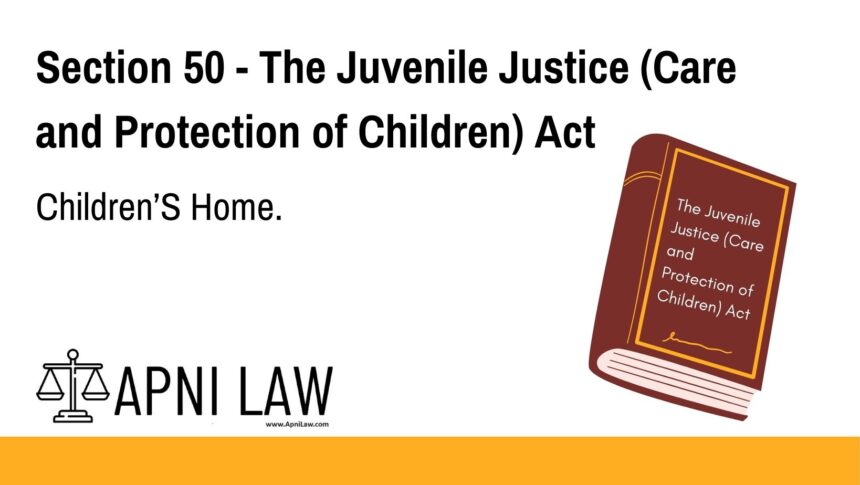Code: Section 50 — Children’s Homes
(1) The State Government may establish and maintain, in every district or group of districts, either by itself or through voluntary or non-governmental organisations, Children’s Homes, which shall be registered as such, for the placement of children in need of care and protection for their care, treatment, education, training, development and rehabilitation.
(2) The State Government shall designate any Children’s Home as a home fit for children with special needs delivering specialised services, depending on requirement.
(3) The State Government may, by rules, provide for the monitoring and management of Children’s Homes including the standards and the nature of services to be provided by them, based on individual care plans for each child.
Explanation of Section 50
Section 50 of the Juvenile Justice Act empowers State Governments to set up and manage Children’s Homes. These facilities provide shelter and services to children who are identified as being in need of care and protection.
Children’s Homes can be established and run directly by the State or through authorized voluntary or non-governmental organizations. These homes are essential for offering children basic needs such as food, shelter, education, and emotional support. The goal is to help each child grow in a safe, structured environment until a long-term care solution—like adoption or family reunification—is found.
In addition, the State has the responsibility to identify and designate certain Children’s Homes as suitable for children with special needs. These homes offer specialized care and therapy suited to the child’s physical or mental condition.
Finally, Section 50 allows the State Government to issue rules regarding the management and monitoring of these facilities. Each child must have an individual care plan that guides the services they receive based on their unique circumstances and development goals.
Illustration
Example: Placement of an Orphaned Child
A 10-year-old child, Raju, is found abandoned at a railway station. After intervention by the Child Welfare Committee, Raju is placed in a registered Children’s Home in the district. The home provides him with education, nutrition, psychological counseling, and recreational activities while efforts are made to trace his family or find a suitable long-term care option.
Common Questions and Answers on Section 50
1. What is a Children’s Home?
A Children’s Home is a facility established under the Juvenile Justice Act to house and care for children in need of protection. These homes provide food, education, healthcare, and rehabilitation.
2. Who manages these homes?
Children’s Homes can be managed by the State Government directly or through registered voluntary or non-governmental organizations.
3. What kind of children are placed in Children’s Homes?
Children who are abandoned, orphaned, abused, neglected, or otherwise in need of care and protection may be placed in these homes as determined by the Child Welfare Committee.
4. What are Children’s Homes for children with special needs?
These are specially designated facilities within the broader Children’s Homes system that cater to children with disabilities or emotional and behavioral issues, offering specialized services.
5. How are the services in a Children’s Home monitored?
The State Government issues rules and standards for management. Each child receives care based on an individual plan that outlines specific goals and services.
Conclusion
Section 50 ensures that children in vulnerable situations receive proper care through dedicated Children’s Homes. By offering essential services and specialized support, these homes provide a stable foundation for the child’s growth and eventual reintegration into society. This section empowers State Governments to not only set up these homes but also regulate their quality, ensuring that every child is treated with dignity and compassion.
For more updates on child welfare and legal rights, explore more resources at ApniLaw.








